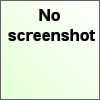org.kde.digikam

digiKam is an advanced open-source digital photo management application that runs on Linux, Windows, and MacOS. The application provides a comprehensive set of tools for importing, managing, editing, and sharing photos and raw files. You can use digiKam’s import capabilities to easily transfer photos, raw files, and videos directly from your camera and external storage devices (SD cards, USB disks, etc.). The application allows you to configure import settings and rules that process and organize imported items on-the-fly.
digiKam organizes photos, raw files, and videos into albums. But the application also features powerful tagging tools that allow you to assign tags, ratings, and labels to photos and raw files. You can then use filtering functionality to quickly find items that match specific criteria.
In addition to filtering functionality, digiKam features powerful searching capabilities that let you search the photo library by a wide range of criteria. You can search photos by tags, labels, rating, data, location, and even specific EXIF, IPTC, or XMP metadata. You can also combine several criteria for more advanced searches. digiKam rely on Exiv2 library to handle metadata tag contents from files to populate the photo library.
digiKam can handle raw files, and the application uses the excellent LibRaw library for decoding raw files. The library is actively maintained and regularly updated to include support for the latest camera models. digiKam can also manage video files for cataloging purpose, and the application uses the couple FFmpeg and QtAv libraries to extract metadata and play media.
The application provides a comprehensive set of editing tools. This includes basic tools for adjusting colors, cropping, and sharpening as well as advanced tools for, curves adjustment, panorama stitching, and much more. A special tool based on Lensfun library permit to apply lens corrections automatically on images.
Extended functionality in digiKam is implemented via a set of tools based of plugins mechanism (named DPlugins for digiKam Plugins). Plugins can be written to import and export contents to remote web-services, add new features to edit image, and batch process photo.
Features:
- Organization of photos in albums and sub-albums (with tags and comments support)
- Support for Exif, Iptc, Xmp, Makernotes
- SQLite or Mysql powered storage for the album contents and its metadata with advanced search tools
- Support for filtering and sorting albums
- Import from more than 1100 digital camera devices
- Support for more than 900 RAW format pictures
- Light Table to compare photo side by side
- Extended features using extra tools
- Share your photos using HTML or publishing them to remote web services
- Image editor included with advanced tools to fix photo quickly
Latest reviews
To be honest, I'm currently running the appimage version of DigiKam, so your mileage may vary. I will probably try the Flatpak version since it's also up to date right now. Glad of the Flatseal reommendation below — I'll see if it's still needed.
DigiKam is a program for managing images, and it works well at this. However, I don't think most people realize how very many pictures they have, and how "expensive" it is to manage them all. I had run DigiKam several times on my "collections" and it didn't seem to be doing anything, so I assumed it was just waiting for me to go to work. How wrong I was! After playing around with version 8.4.0 (the appimage, which doesn't integrate properly with AppImageLauncher because of a malformed appimage) I launched version 8.1.0 (the previous working version, which integrates with AppImageLauncher just fine). Imagine my surprise when there was now a second window that popped up, telling me that digiKam was scanning my collections! This is the main reason I'm holding off on trying version 8.4.0 from the Flatpak — it's still chugging! Yes, I have thousands of pictures in my collections, and it takes time to create thumbnails, fingerprints, etc. for them all.
Part of the reason I'm dusting digiKam off right now is that I need a way to manage my ever-growing library of images for virtual tabletop gaming. Since digiKam allows assigning arbitrary tags to images, no matter where they are located, I'm hoping it resolves the thorny issue of keeping those images organized. Yes, it also does face recognition, and that's a handy feature for my photos. Anyway, don't give up because it's slow. Give it a chance to finish indexing and you may be pleased with the power you've unlocked.
Version 8.2 Flatpak. December 16, 2023. Finally got it working on a folder of my choice using flatseal as suggested by the other commenter (thanks!). Started tagging faces and then ran in to the opaque interface that put me off last time. Nothing seems to work the way I'd expect. For instance I tag a load of faces. Next I want a list of images with those faces. Tried a few YT videos, online reviews etc. I just got frustration and wasted time. Going back to Pix/ gThumb. So much easier and more productive. I'll do it the old fashioned way or maybe pay the price and upload to Google Photos which actually works the way my brain does.
I use Digikam to organize and tag my photos. It's fast, flexible and looks good on 4K monitor. This Flatpak was for Digikam version 7.1 Jan 2021. To use it outside of the default home/picture folder, I needed to change the scope of the Flatpak sandbox portal to include my home folder. This turns out to be easy to do with the separate Flatseal app. Of course it's quite a waste of time to discover this. From Mint Sofware install Flatseal. Then with Digikam running, run Flatseal, select Digikam in left panel, and in filesystem section of right panel, enable "all user files." That's It.